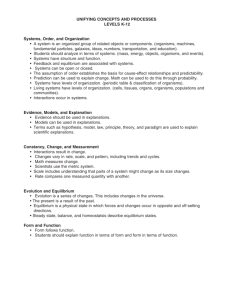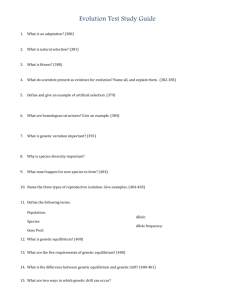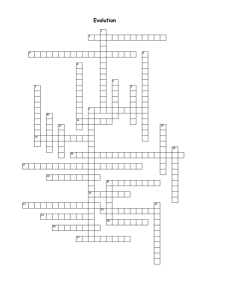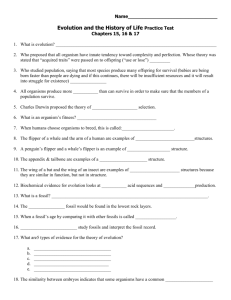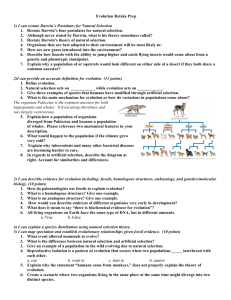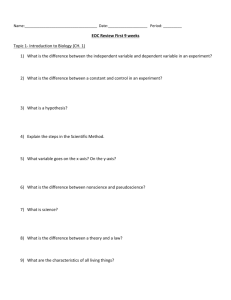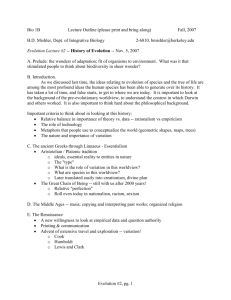Biology 122 - Bonar Law Memorial
advertisement
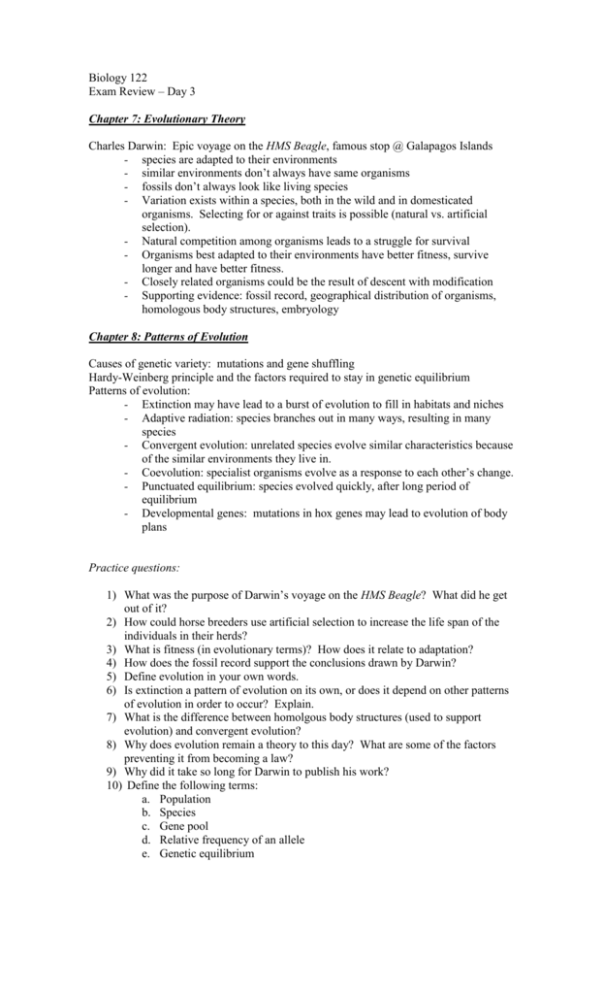
Biology 122 Exam Review – Day 3 Chapter 7: Evolutionary Theory Charles Darwin: Epic voyage on the HMS Beagle, famous stop @ Galapagos Islands - species are adapted to their environments - similar environments don’t always have same organisms - fossils don’t always look like living species - Variation exists within a species, both in the wild and in domesticated organisms. Selecting for or against traits is possible (natural vs. artificial selection). - Natural competition among organisms leads to a struggle for survival - Organisms best adapted to their environments have better fitness, survive longer and have better fitness. - Closely related organisms could be the result of descent with modification - Supporting evidence: fossil record, geographical distribution of organisms, homologous body structures, embryology Chapter 8: Patterns of Evolution Causes of genetic variety: mutations and gene shuffling Hardy-Weinberg principle and the factors required to stay in genetic equilibrium Patterns of evolution: - Extinction may have lead to a burst of evolution to fill in habitats and niches - Adaptive radiation: species branches out in many ways, resulting in many species - Convergent evolution: unrelated species evolve similar characteristics because of the similar environments they live in. - Coevolution: specialist organisms evolve as a response to each other’s change. - Punctuated equilibrium: species evolved quickly, after long period of equilibrium - Developmental genes: mutations in hox genes may lead to evolution of body plans Practice questions: 1) What was the purpose of Darwin’s voyage on the HMS Beagle? What did he get out of it? 2) How could horse breeders use artificial selection to increase the life span of the individuals in their herds? 3) What is fitness (in evolutionary terms)? How does it relate to adaptation? 4) How does the fossil record support the conclusions drawn by Darwin? 5) Define evolution in your own words. 6) Is extinction a pattern of evolution on its own, or does it depend on other patterns of evolution in order to occur? Explain. 7) What is the difference between homolgous body structures (used to support evolution) and convergent evolution? 8) Why does evolution remain a theory to this day? What are some of the factors preventing it from becoming a law? 9) Why did it take so long for Darwin to publish his work? 10) Define the following terms: a. Population b. Species c. Gene pool d. Relative frequency of an allele e. Genetic equilibrium
